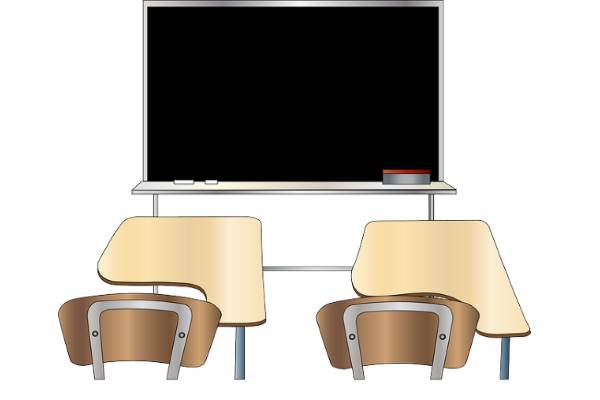Johannesburg, 26 January 2022 – The academic year of 2021 will undoubtedly be regarded as an extraordinary year – one that significantly disrupted learning and brought about unprecedented challenges, particularly for the matric Class of 2021.
When the time came for the 2021 matric results to be released, one would have expected that the difficulties and pressures endured by matrics throughout the year, would negatively have impacted the collective performance and final marks.
However, in her keynote address, the Minister of Basic Education, Mrs Angie Motshekga, announced that the 2021 matric pass rate of 76.4% represented an increase of 0.2 percentage points, compared to the 2020 matric pass rate (76.2%). According to Dr Muki Moeng, Dean of Education at Nelson Mandela University, the 2021 pass rate is a positive outcome, especially considering the challenges that learners were subjected to.
“To think that this is the first class that experienced Grade 11 and 12 under national lockdown measures – which included school closures, rotational timetables, classroom platooning and constant changes to learning environments – you can say that the 2021 matriculants have gone beyond expectation. On behalf of Nelson Mandela University, I would like to congratulate the Matric Class of 2021 on this remarkable achievement,’’ says Dr Moeng.
The matric pass rate is often picked apart by commentators every year as it is said to be a false representation of the actual pass rate. This is due to the fact that the amount of learners who pass matric, compared to the number of learners who enter the education system in Grade 1, is not factored in.
24.6% of candidates who wrote the 2021 National Senior Certificate examinations did not pass matric. Dig deeper and the dropout rate of learners between Grade 10 and 12 is 32.7% (341 403 learners). 897 163 learners wrote the 2021 matric examinations, but the Grade 10 enrolment in 2019 was 1 045 424. This means that 148 261 learners dropped out of the education system and did not complete matric. Given the current economic conditions, there is arguably little going for these learners and the harshest of critics will say that the education system has failed them.
Dr Moeng shares this sentiment to a certain extent: “The performance of the Class of 2021 does not negate the inequalities that are in the education system and the difficulties that learners have to go through on their schooling journey. Learners who drop out of school or fail to pass matric, or even those who matriculate without at least a higher certificate pass, have no realistic avenues to further their education, nor are they adequately geared to directly enter the job market.’’
Contributing factors to poor performance
A lack of teaching equipment and resources, as well as oversized classes, all impact on learners’ schooling experiences and resultant performances. There is also a lack of support from the department when it comes to the progression of learners. Learners who do not make the grade, are often pushed through to the next grade, without the guidance and support that is necessary to help them grasp the curriculum in the next phase of learning.
‘’Promoting learners in the foundation phase, especially to progress into the intermediate phase, should be avoided as the basic foundations are important for higher grades,’’ says Dr Moeng. ‘’It is better in the long run to rather hold a child back and for them to get the basics right, before progressing to the next grade. To this end, proper support for teachers in the classroom needs to be provided, as well as psychosocial support that will assist in early diagnosis and referral,” says Dr Moeng.
At the same time, a blind eye cannot be turned to the socioeconomic factors that impact learners on their journeys to matric. Learners in impoverished communities often experience pitfalls and setbacks unrelated to education, such as a lack of nutrition, a lack of resources and reading material, minimal social interaction in early development years, poor family support, violence and abuse, and on top of this, disruptions caused by COVID-19.
“How can we expect a learner to make it to and pass matric if he or she, for example, live in a disruptive household or goes to school on an empty stomach? These are the struggles that so many of our learners have to overcome, and is something government needs to address if our youth are to be uplifted out of poverty and lead a prosperous life,’’ says Dr Moeng.
Another challenge experienced by learners is the undue pressures from family and the schooling system itself to succeed. Learners are often forced to take subjects for which they show no aptitude or interest. “We really are fooling ourselves if we think that everyone can become an academic and graduate at university,’’ says Dr Moeng. “Learners are wired differently, and those who show no appetite for the mainstream curriculum should be equipped with the knowledge and skills to pursue vocational careers or entrepreneurial opportunities. The unfortunate reality is that we, as a country, are not doing enough to channel resources into vocational training and entrepreneurship in secondary and tertiary education,” she says.
Pandemic learnings and the future
The pandemic exposed the glaring inequalities in our education system and, at the same time, gave us the opportunities to explore with technology to improve teaching and learning going forward. “We must not forego the opportunity that the pandemic has presented, and investments must be made in the methodologies that have worked for us during the pandemic. Government must provide the necessary infrastructure and equipment needed in order to do this,’’ says Dr Moeng.
Press Contact:
Kerry Simpson
Tel: 079 438 3252












